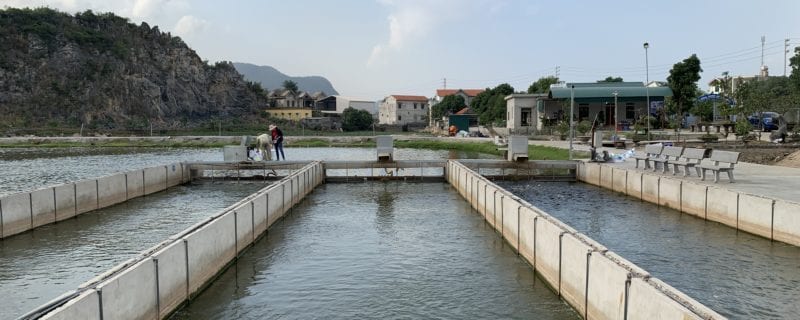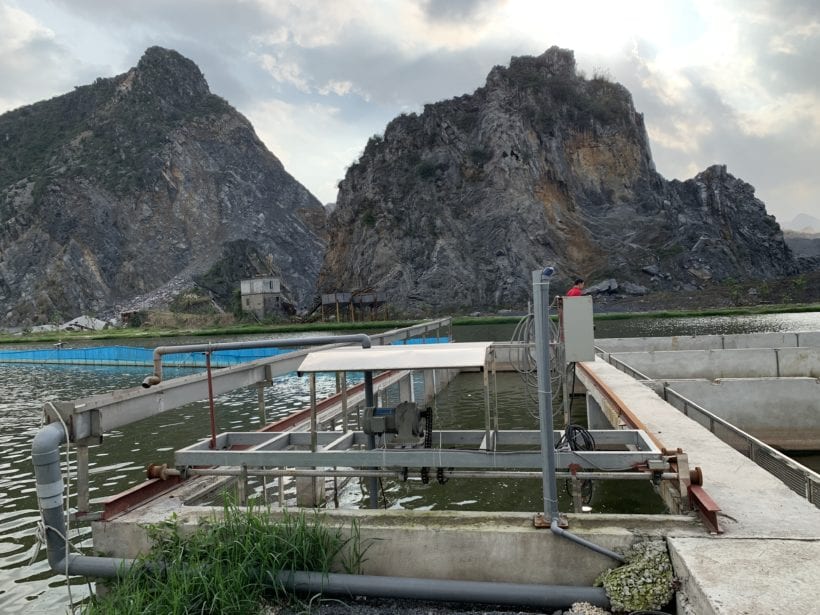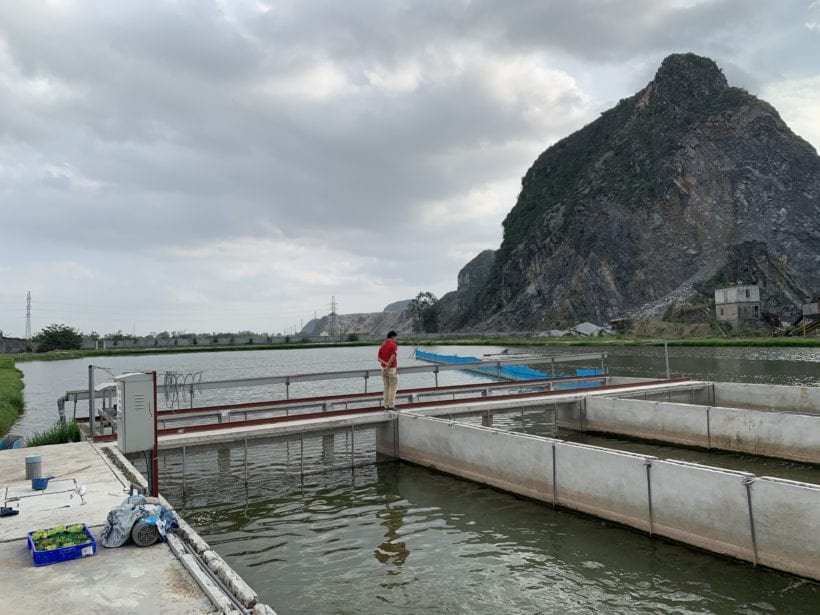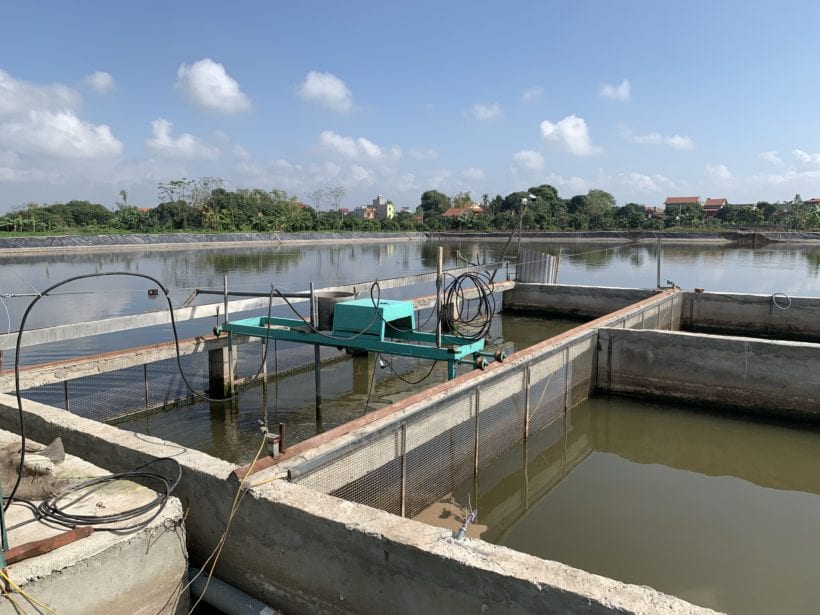Northern Vietnamese Fish Farmers Receive IPRS Technical Assistance
- Category:
- Aquaculture
- General News
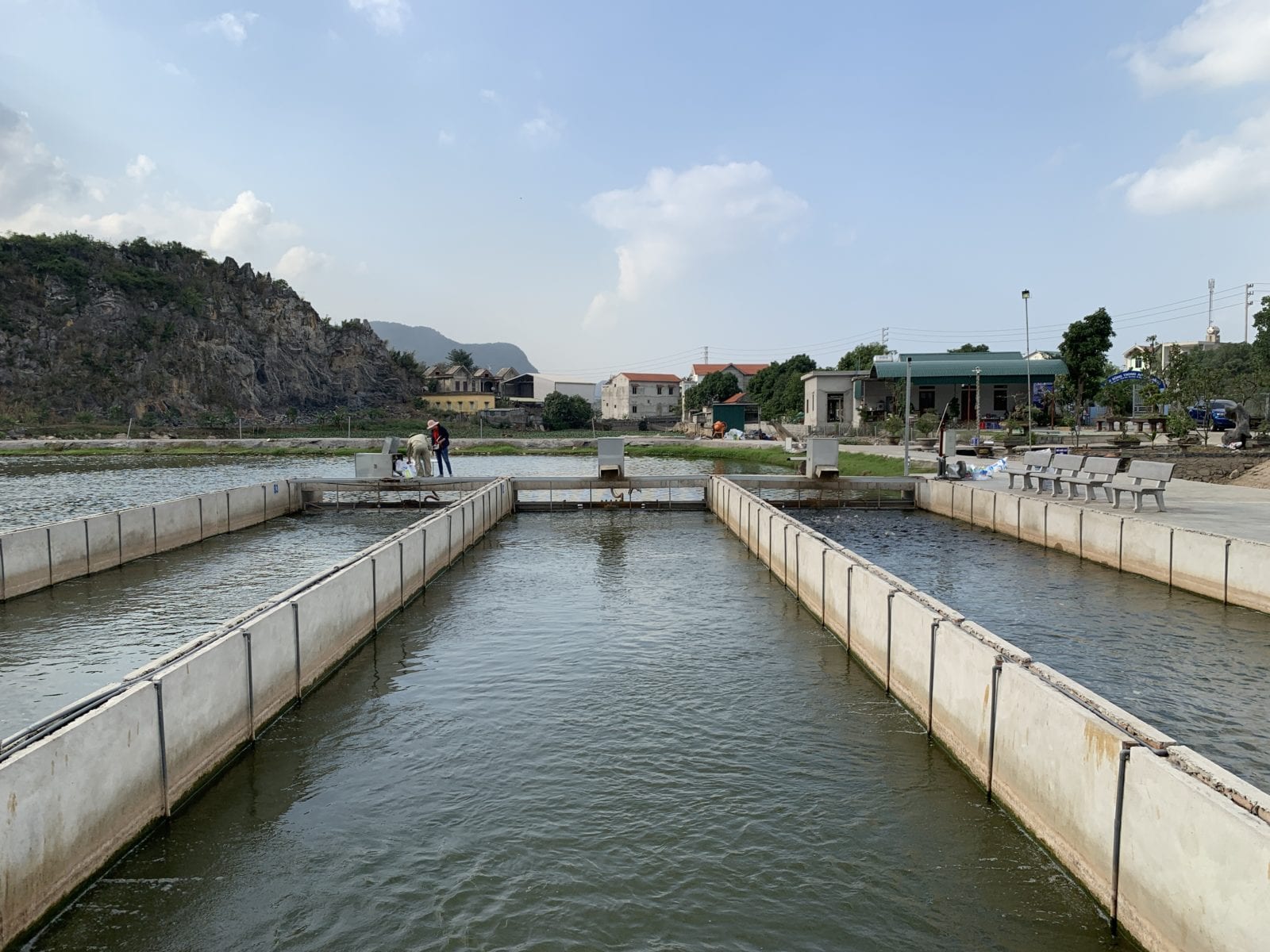
USSEC recently provided technical assistance to Northern Vietnam fish farmers.
USSEC Thailand Technical Manager – Aquaculture Chuchai Kanjanamayoon visited Northern Vietnam from January 6 to 12 to exchange knowledge of Thailand’s In Pond Raceway System (IPRS) with Northern Vietnam farmers. Most of the standard IPRS systems in that part of Vietnam are not yet fully installed or completed.
The USSEC team discovered several issues in different matters and created the following checklist during the visit. The checklist will help the team to identify and improve on each individual IPRS so fish farmers will receive maximum benefits from USSEC’s recommendations.
| Description/Criteria | Numbers/Y/N | Remarks | Pictures |
| Area (m2) | |||
| Water depth (m) | |||
| Volume of water (m3) | |||
| Number of Cells | |||
| Cell dimension | |||
| Total Number of White Water Units (WWU) | |||
| WWU in the pond, Y or N | |||
| Number of WWU in the pond | |||
| WWU - floating (Y or N) | |||
| WWU - Fixed (Y or N) | |||
| With Extra WWU (Y or N) | |||
| Air Blower/Compressor | |||
| Supplementary Aeration System (Y or N) | |||
| Number of Screen Groove - after the WWU | |||
| Number of Screen Groove -after the production cell | |||
| Number of Screen Groove after the Quiescing Zone (QZ) | |||
| QZ, Y or N | |||
| IQZ is 3m | |||
| QZ is 6m | |||
| Net gate after QZ | |||
| Waste collector (working well, Y or N) | |||
| Sludge Collection Vessel / Tank (Y or N) | |||
| Waste treatment (Y/N) | |||
| Working Walkway Upstream (after the upstream screen gate) | |||
| Working Walkway Downstream (before downstream screen gate) | |||
| Baffle, Y or N | |||
| Baffle opening (100%, 200%, 300%) | |||
| Generator - Manual Start (Y or N) | |||
| Generator - Automatic Start-up (Y or N) | |||
| Electric Supply (Single Phase or Three Phase) | |||
| Water Source/Supply (Irrigation, Rain Fed, Deep Well, Bore Hole) | |||
| Water supply regular? | |||
| Species stocked in cells | |||
| Species stocked in pond | |||
| Animals/livestock in/around pond | |||
| Grass/vegetable in/on pond | |||
| Commercial feed | |||
| Self-formulated feed | |||
| Others (grass, vegetable…) | |||
| Disinfection regularly? | |||
| Well maintaining equipment? | |||
| Well feed management? | |||
| Speed of water current in cells (strong/moderate/weak) | |||
| IPRS (Y or N) | |||
| IPRS-Like (Y or N) |
For example,
According to Dr Thanh, USSEC Technical Manager – Northern Vietnam, there are many IPRS which do not meet the standard requirements. He will check and let the team know which to monitor.
Many farmers installed the system quickly and without following the correct standards. The engineering blueprints will be distributed to them so that they can follow the correct IPRS design. A certificate or label will be given to the farmers who pass the standard so that other farmers can learn from the design.
It is still an ongoing process to develop IPRS in each country. Thailand has a first corrected standard and this farm should be used to create awareness for the farmers.
In February, USSEC plans to bring ten Vietnamese farmers to visit IPRS in Thailand.
“IPRS Technology will be the future system for the location risk on water supply shortage,” Dr. Jesse Chappell, the author of IPRS technology has previously stated.
U.S. Soy usage will increase as fish production increase. The inclusion of U.S. soybean meal in aquafeed is currently about 20 to 30%.
